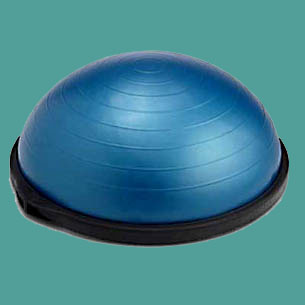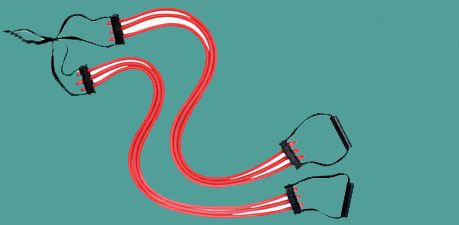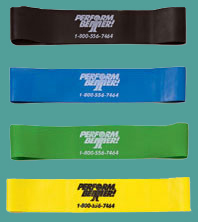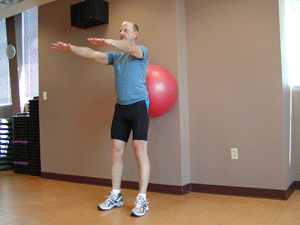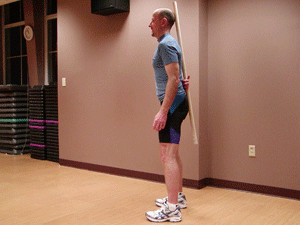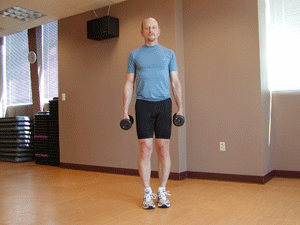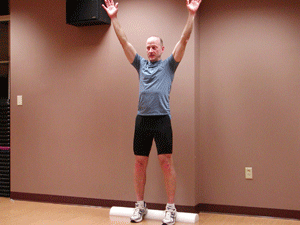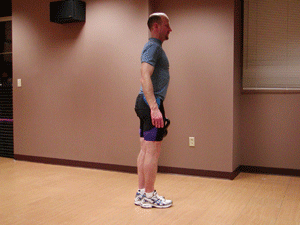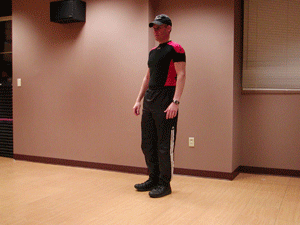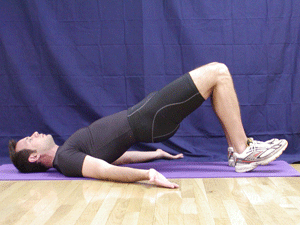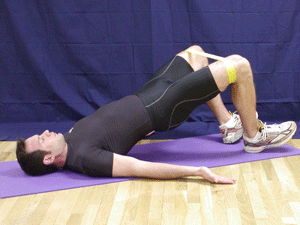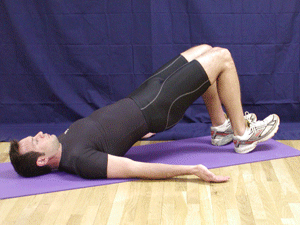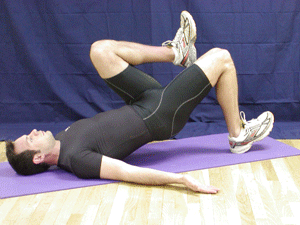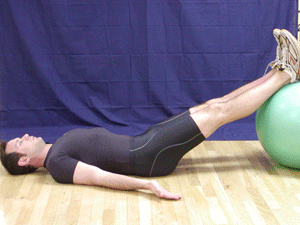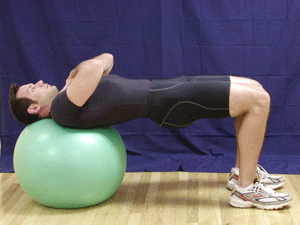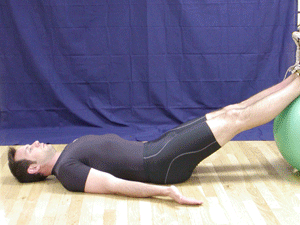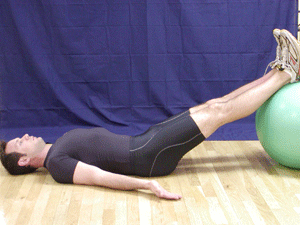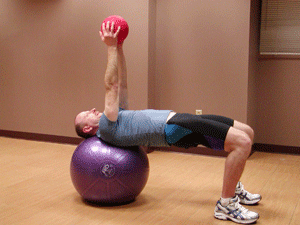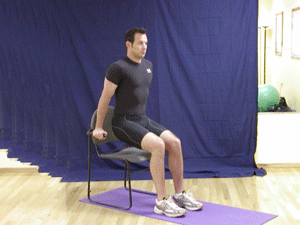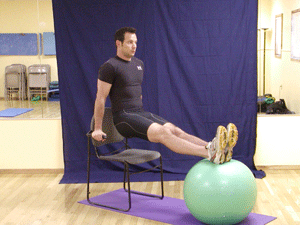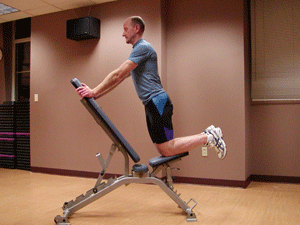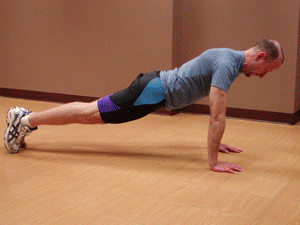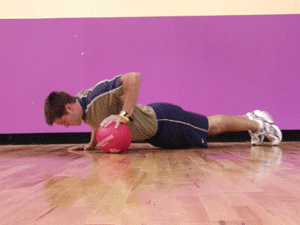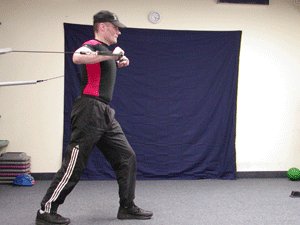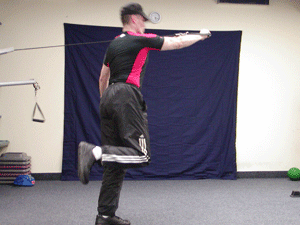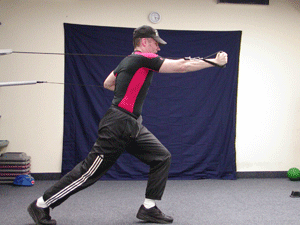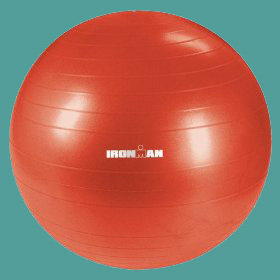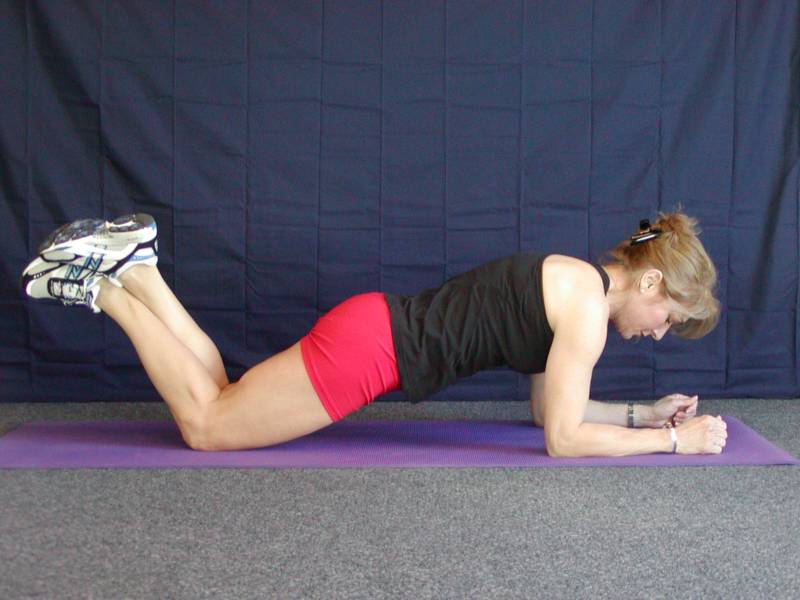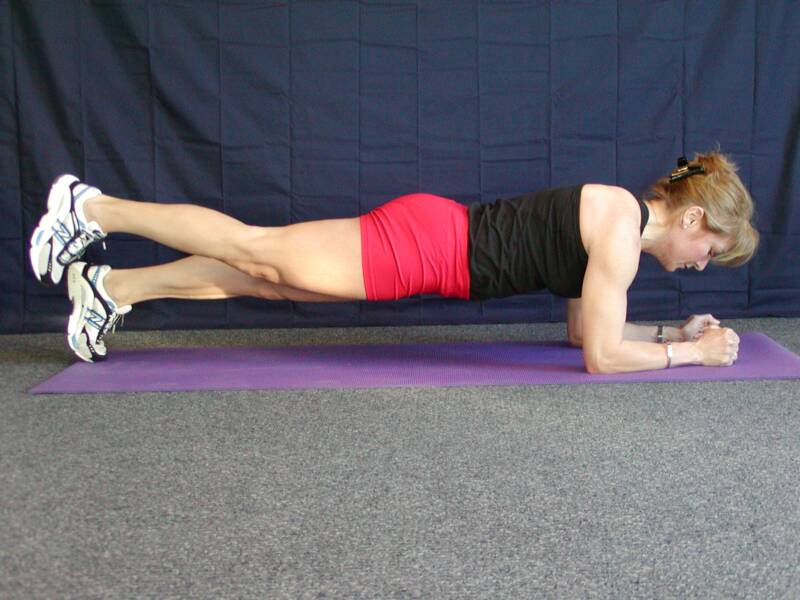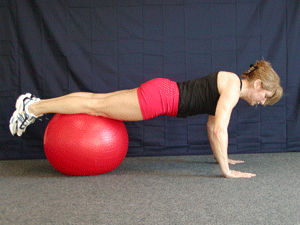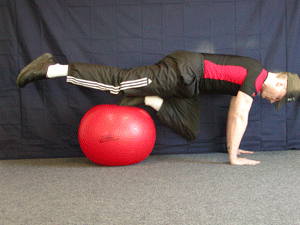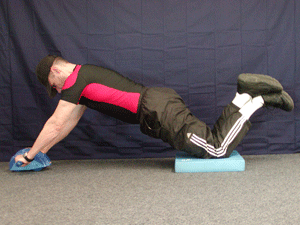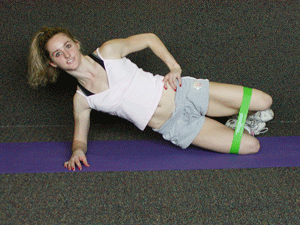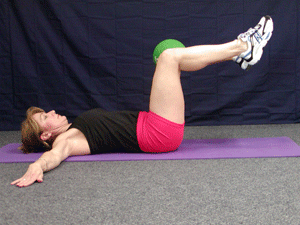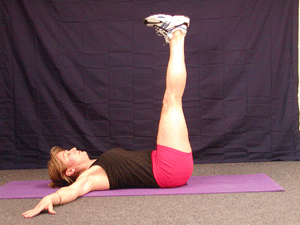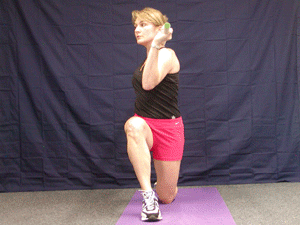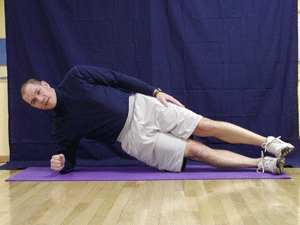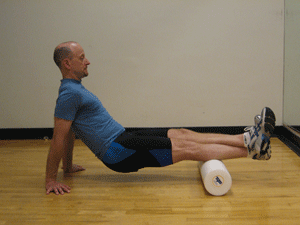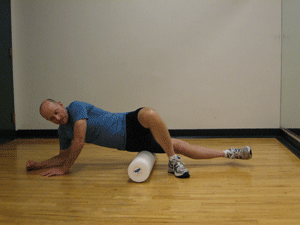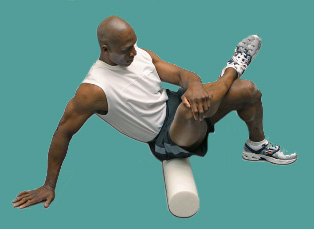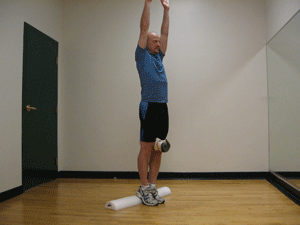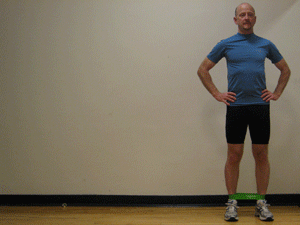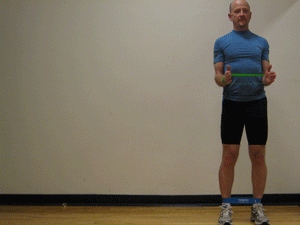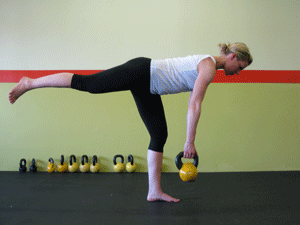




Many popular books and exercise programs include exercises that are randomly organized and not based on a hierarchy of difficulty. This leaves the reader or exerciser frustrated if they can't do the exercises that are laid out in these aforementioned books.
Core Essentials takes pride in presenting the exercises in a way that most (if not all) people can perform, due to this hierarchy of difficulty.There are 6 Templates in which each exercise is graded from easiest to hardest. Keep in mind, some templates (even though they are listed from easiest to hardest) may not be graded perfectly.
Pick one exercise (from each template) that is challenging but not overwhelming, try to perform the exercise in perfect form. These exercises mimic the basic patterns of human movement:
I believe in integrated strength, which simply means promoting movements that require full body effort & awareness which will improve one's ability to perform Activities of Daily Living (ADL's) and sport. When I work with my clients, I usually pick one exercise from each template (based on the abilities of the individual). Each person receives a comprehensive screen which ultimately dictates what exercises are chosen.
I recommend doing the MOVEMENT PREP exercises FIRST prior to doing the below exercises (scroll to the bottom of this page for details).

For a FULL explanation of each exercise, place mouse on the exercise you want to learn about & left click.

For a FULL explanation of each exercise, place mouse on the exercise you want to learn about & left click.
1. Ball Squat 2. Two-Leg Deadlift 3. Full Squat 4. Dippin' Bird
5. Side Lunge 6. Kettlebell Swing 7. One Leg Deadlift 8. One Leg Squat
1. Two-Leg Bridge 2. Bridge with Fallouts 3. Bridge with Marching 4. One-Leg Bridge
5. Ball Bridge 6. Bridge w/ Alt. Leg Lift 7. Tabletop 8. Two-Leg Ball Curl
9. One-Leg Ball Curl 10. Russian Twist 11. Russian Twist w/Elbow Support
For a FULL explanation of each exercise, place mouse on the exercise you want to learn about & left click.
For a FULL explanation of each exercise, place mouse on the exercise you want to learn about & left click.
For a FULL explanation of each exercise, place mouse on the exercise you want to learn about & left click.
Web site designed by Michael Sylvester & hosted at Homestead™
1. Seated Dip

 2. Long Sitting Dip
2. Long Sitting Dip 3. Chest Press on Ball 4. Chest Press on Foam
3. Chest Press on Ball 4. Chest Press on Foam
5. Incline Push-Up 6. Push-Up on Knees 7. Push-Up on Toes 8. Plyo-Push-Up
9. Standing Chest Press 10. 1 Leg/1 Arm Press 11. Push/Pull w/Squat 12. Jog and Jab
1. Half-Kneeling Pulldown 2. Squat -to-Row 3. One-Arm Row on Bench 4. Deadlift-to-Row (1 Leg)
5. Bent over Rows (1 Leg) 6. Renegade Rows
1. Plank 


 2. Plank
2. Plank


 3. Plank
3. Plank
 4. Prone Ball Walk Out
4. Prone Ball Walk Out
(Elbows & Knees) (Elbows & Toes) (with Hip Extension)
5. Jack Knife 6. Jack Knife (1-Leg) 7. Alternalte Hip Flexion 8. Rolling Wheel on Knees
9. Rolling Wheel on Toes
For a FULL explanation of each exercise, place mouse on the exercise you want to learn about & left click.
1. LTR/Feet on Ground 2. LTR/Feet off Ground 3. LTR/Legs Straight 4. UTR/in 1/2 Kneeling
5. Clam Shell 6. Clam Shell/Hips Up 7. Side Bridge/elbow/ankle 8. Side Bridge/Hip Ab.
9. Side Sit-Up on Bosu 10. Side Sit-Up on SB
Explanation:
Many muscles develop "knots" or adhesions (scar tissue) from overuse or previous injuries. A different form of flexibility training is needed for this type of problem that focuses on the fascial system (connective tissue) in the body which is prone to these adhesions (or knots).
Simple stretching is not always the answer for restoring normal range of motion in this context. This is where deep tissue, or what massage therapists refer to as cross friction massage, which attempts to 'break up' or release these knots. An alternative to massage therapy is to use, what we call in this field, A FOAM ROLLER, (see figure 1) which attempts to break the adhesions. This is called Self-Myofascial-Release or SMR for short.
Foam Rollers are available at:
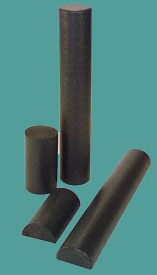

Figure 1 (Foam rolls)


Foam Roller/Calves Foam Roller/Iliotibial Band

Caution: Foam rolling may be painful*.
* Some individuals may experience severe pain when foam rolling certain areas. In many cases this simply means that adhesions exist in these areas.
Contraindications to Foam Rolling:
Malignancy
Osteoporosis
Osteomyelitis (bone infection)
Phlebitis (infection of superficial veins)
Varicose Veins
Cellulitis (infection of soft tissue)
Acute rheumatoid arthritis
Blood clot
Eczema (skin lesions)
Healing fractures
Obstructive edema
Advanced diabetes
Hematoma or systemic / localized infection
High Blood Pressure
Heart Disease
Explanation:
According to Gray Cook, PT, author of the best selling book, "Athletic Body in Balance", The Toe Touch Progression simply teaches relaxation of the lower back and how to shift weight from the heels to the toes in a smooth and consistent fashion.
If you can't touch your toes, this is an indicator that your low back is too tight and can impede proper form on the squat incidentally.
When you perform the Toe Touch Progression, your feet should be 'locked' together which forces you into a HIGH ARCH position. And with your toes elevated (on the 1/2 foam) you bias a stretch to the gastroc/soleus (calf) and SHUT DOWN the plantar flexors. At the same time by adducting the legs (squeeze towel between knees) it turns on the anterior structures of the core and through reciprocal inhibition you shut off the external rotators of the hip and low back as well as the hip extensors (buttocks and hamstrings).
This is like magic, you should see immediate increases in range of motion in your posterior muscles (calves, and hamstrings), unless of course there is some other pathology that exists. Click on the thumbnail for more details.

Stretch
Toe Touch Progression
(Toes on Foam)
Toe Touch Progression
(Heels on Foam)

Using 'Mini-bands' has become a popular exercise in the gyms today. When attaching the band at the ankles and walking sideways (as shown below) it is a great way to target your hips and butt (the gluteus medius & gluteus maximus). These muscles are very important for stabilizing your hips, not to mention, the 'toning' effect this exercise has on your hips and butt.
Activating the Glutes prior to the exercise program, is an excellent warm-up and more importantly, prepares the neuromuscular system to recruit these very important muscles when performing strengthening exercises. The 'Glutes" have the ability to stabilize the hips as well as 'steer' your knees in the proper position thus having the potential to properly align the knees during exercise and sporting activities.
Explanation:
Click the bands above to be directed to the company that sells them.
Lateral Tube Walking Lateral Tube Walking with UE ER
Courtesy of the NASM
To pregnant women: Avoid foam rolling the inner thighs (or medial side of lower leg) as this can be shown to induce premature uteral contractions (Source: NASM). It should also be noted that after the first trimester, pregnant women may be more sensitive to foam rolling.

Model: Michaela Foulkes/Click Here to visit her website.
